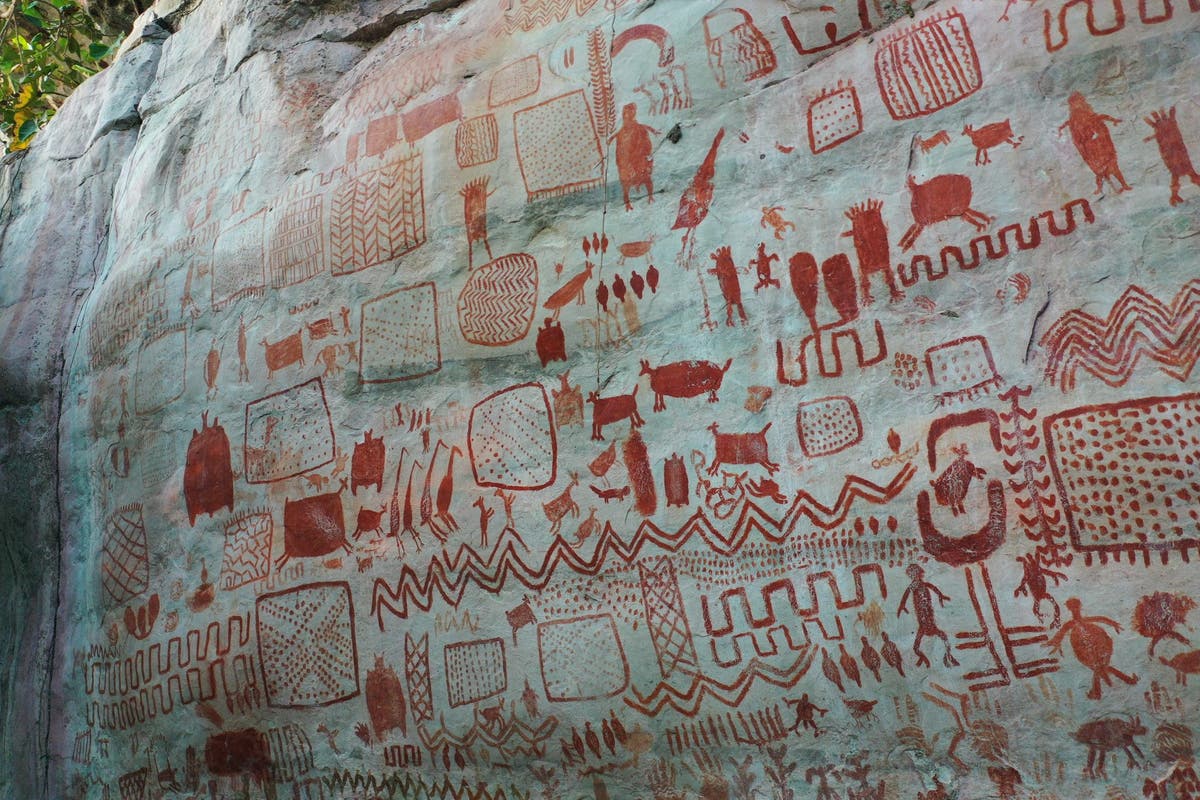Real support
Independent Press
Our mission is to provide unbiased, fact-based reporting that holds power to account and exposes the truth.
Whether it's $5 or $50, every contribution counts.
Support us to provide journalism without an agenda.
Archaeologists have discovered a giant rock in the Colombian Amazon bearing numerous yellow animal carvings dating back 12,500 years, a discovery that sheds light on the mythology and diet of the continent's first humans.
The Cerro Azul hill in Serrania de la Lindosa, Colombia, hosts a stunning collection of paintings depicting a range of creatures including animals and humans transforming into each other.
The freestanding table hill contains 16 “tablets” of yellow-coloured drawings, many of which can only be accessed by researchers after an arduous climb.
These stunning rock paintings, which likely served as a vast gallery for an ancient people for thousands of years, reveal the rich mythology that guided generations of indigenous Amazonians, according to a new study published in the journal Nature. Journal of Anthropological ArchaeologyY.
“These rock art sites include the oldest evidence of human presence in western Amazonia, dating back 12,500 years,” said study co-author Mark Robinson of the University of Exeter.

Researchers evaluated animal remains excavated from nearby sites and compared them to creatures depicted in rock art.
The scholars focused in particular on six panels in detail, ranging from a 40-meter-by-10-meter panel containing more than 1,000 images to a much smaller 60-square-meter panel containing 244 well-preserved red panels.
In all, using drones and traditional photography, the researchers documented more than 3,200 images drawn on the rock, most of them related to animals such as deer, birds, pigs, lizards, turtles and tapirs.

The researchers found that the ancient Amazonians had a diverse diet that included fish, a range of small and large mammals, as well as reptiles, including turtles, snakes and crocodiles.
Although fish are found in abundance in archaeological remains, their appearance in artworks was limited to only two paintings.
Since the proportions of the animal bones do not match the representation of animals in the rock art, scientists suspect that the artists did not just paint what they ate.

There was also a noticeable absence of big cats in the paintings despite their status as the region's most important predators.
“The context shows the complexity of Amazonian relationships with animals, both as a food source but also as respected beings, which had supernatural connections and required complex negotiations by ritual specialists,” said Dr Robinson.
Some figures that combine human and animal characteristics suggest a complex myth of transformation between animal and human states, a belief that still exists in modern Amazonian societies.

The paintings highlight ancient peoples' broad understanding of the region's range of habitats, including savannas, flooded forests and rivers.
“They had intimate knowledge of the different habitats in the area and possessed the relevant skills to track and hunt animals and harvest plants from each, as part of a broad subsistence strategy,” said Javier Acetuno, another author of the study from Medellin, Colombia.
“Although we cannot be certain of the meaning of these images, they certainly provide greater detail to our understanding of the power of myths in indigenous societies,” said study co-author José Iriarte from Exeter.

“Extreme travel lover. Bacon fanatic. Troublemaker. Introvert. Passionate music fanatic.”







More Stories
A review of Rhengling at Erfurt Theater
MrBeast Sued Over 'Unsafe Environment' on Upcoming Amazon Reality Show | US TV
A fossilized creature may explain a puzzling drawing on a rock wall.